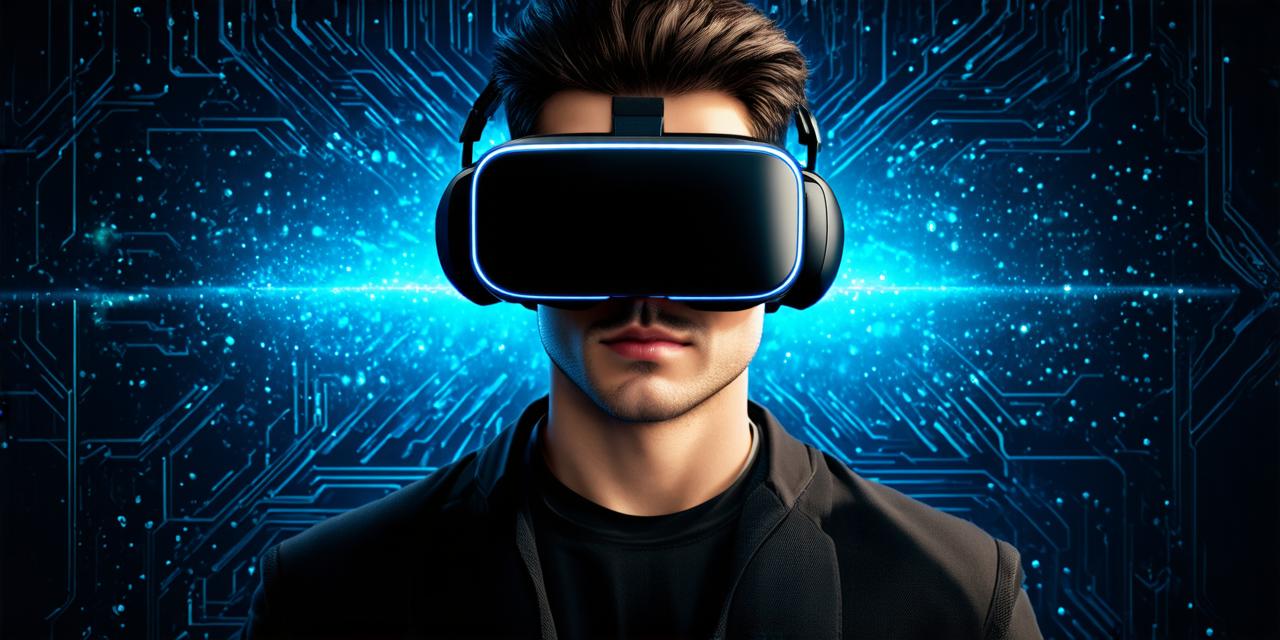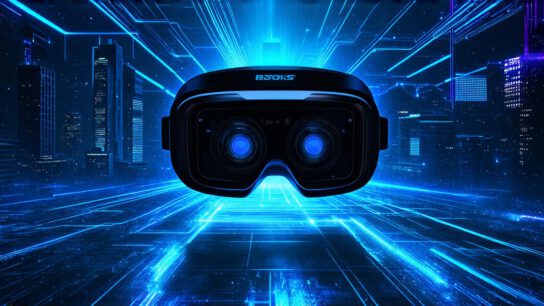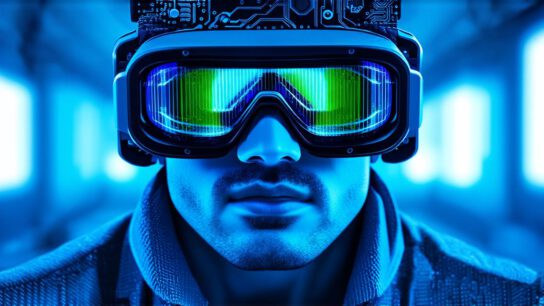Virtual Reality Headsets
Virtual reality headsets are wearable devices that track the movements of the user’s head, allowing them to look around in a virtual environment. The headset uses sensors such as accelerometers and gyroscopes to detect the user’s head movement and adjust the image accordingly.
Types of Virtual Reality Headsets
There are various types of virtual reality headsets available on the market, each with its unique features and capabilities. The most common types include:
- Wireless VR Headsets: These headsets do not require any cables or wires to connect to a device. They use wireless technology such as Bluetooth or Wi-Fi to transmit data between the headset and the device.
- Wired VR Headsets: These headsets require a cable to connect to a device, such as a computer or gaming console. They offer higher resolution and more precise tracking compared to wireless headsets.
- Smartphone VR Headsets: These headsets use a smartphone as the main display, allowing users to access virtual reality experiences directly on their phone. They offer lower resolution compared to other types of VR headsets but are more affordable and portable.
- Standalone VR Headsets: These headsets do not require any external devices such as a computer or gaming console to function. They have their own built-in displays and sensors, allowing users to experience virtual reality directly on the headset.
Functions of Virtual Reality Headsets
Virtual reality headsets perform several functions that enable immersive experiences for users. The following are some of the key functions:
- Tracking: Virtual reality headsets use sensors such as accelerometers and gyroscopes to track the user’s head movement, allowing them to look around in a virtual environment.
- Display: VR headsets display high-resolution images that create an illusion of depth and three-dimensionality. The display technology used in VR headsets varies depending on the type of headset, but it typically involves projecting images onto a screen or using light-emitting diodes (LEDs).
- Audio: Virtual reality headsets also have built-in audio systems that provide users with realistic sound effects and spatial audio. This helps to create an immersive experience by providing users with a sense of presence in the virtual environment.
- Hand Tracking: VR headsets can track the movements of the user’s hands, allowing them to interact with objects in the virtual environment. This is typically done using specialized sensors or cameras that detect the position and movement of the user’s hands.
- Input Devices: Virtual reality headsets often require input devices such as controllers or gloves to enable users to interact with objects in the virtual environment. These input devices can be used to perform actions such as pointing, grabbing, and wielding virtual objects.
Case Studies and Personal Experiences
One of the best ways to understand the functions of virtual reality headsets is through case studies and personal experiences. Here are a few examples:
- Virtual Tourism: Virtual reality headsets can be used to provide immersive travel experiences that allow users to explore different parts of the world without leaving their homes. For example, the VR company 360 Cities offers virtual tours of cities such as London and Paris, allowing users to experience the sights and sounds of these cities in a realistic and engaging way.
- Training and Simulation: Virtual reality headsets can be used for training and simulation purposes in various industries, including healthcare, military, and aviation. For example, medical students can use VR simulations to practice surgeries, while pilots can use VR simulators to train for flight in a safe and controlled environment.
- Gaming: Virtual reality headsets are widely used in the gaming industry to provide immersive gaming experiences. Games such as “Beat Saber” and “Job Simulator” are designed specifically for VR headsets, allowing users to experience these games in a whole new way.
- Education: Virtual reality headsets can be used in education to provide students with engaging and interactive learning experiences. For example, students can use VR headsets to explore historical events or scientific concepts in a virtual environment.
Research and Experiments
Numerous studies have been conducted to understand the effects of virtual reality on various aspects of human behavior and cognition. Here are a few examples:
- Memory Improvement: Research has shown that virtual reality can improve memory retention and recall. In one study, participants who experienced a virtual tour of a museum performed better on memory tests than those who visited the museum in person.
- Reduced Fear and Anxiety: Virtual reality has been used to treat conditions such as phobias and PTSD by exposing patients to controlled virtual environments that simulate real-world scenarios. Studies have shown that this exposure can reduce fear and anxiety levels in patients.
- Enhanced Learning: Virtual reality has been found to enhance learning in various domains, including language acquisition and scientific concepts. In one study, participants who learned a new language using VR showed better retention and recall than those who learned the language through traditional methods.
- Reduced Pain: Virtual reality has been used to treat pain in patients with chronic conditions by creating virtual environments that distract from pain and provide a sense of control over their environment. Studies have shown that this can reduce pain levels in patients.
Comparisons and Figurative Language
Virtual reality headsets can be compared to other technologies such as smartphones, laptops, and televisions. However, they offer a unique experience that is difficult to replicate with these devices. For example, while a smartphone can provide access to virtual reality experiences through apps, it cannot track the user’s head movement or provide an immersive three-dimensional environment like a VR headset.
Figurative language can be used to describe the experience of using virtual reality headsets. For example, users can say that they “feel like they are in another world” when using VR headsets. This captures the sense of immersion and realism that VR provides.
FAQs
Here are some frequently asked questions about virtual reality headsets:
- What are the requirements for using a virtual reality headset? The requirements vary depending on the type of headset, but most require a computer or gaming console with sufficient processing power and graphics capabilities. Users also need to have enough space in their environment to move around freely while wearing the headset.
- How do virtual reality headsets track the user’s head movement? Virtual reality headsets use sensors such as accelerometers and gyroscopes to track the user’s head movement. These sensors detect changes in the user’s position and orientation, allowing the headset to adjust the display accordingly.
- Can virtual reality headsets be used for social interactions? Yes, some virtual reality headsets have built-in social features that allow users to interact with others in virtual environments. For example, users can join virtual worlds or participate in multiplayer games with other people using VR headsets.
- What are the potential risks associated with using virtual reality headsets? While virtual reality is generally safe, there are some potential risks to be aware of. These include motion sickness, eye strain, and disorientation. It’s important to use VR in moderation and take breaks as needed to avoid these issues.
- What types of content can be experienced using virtual reality headsets? Virtual reality headsets can be used for a wide range of content, including gaming, education, training, simulation, and tourism. There are also many specialized VR experiences available for niche interests such as art, architecture, and history.



